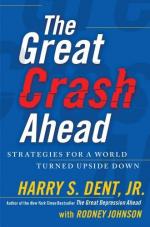|
This section contains 1,138 words (approx. 4 pages at 300 words per page) |

|
Justice Prevails in "Crash"
Summary: Paul Haggis' 2005 movie Crash depicts John Stuart Mill's theories on social justice and utility in a modern-day context. While social justice prevails in a society in which legal laws are practiced and respected and personal liberty and property are protected by such laws, the film represents a multicultural society built on racism and inequality, which limits social justice and makes prejudice and stereotyping prevalent when discussing legal rights and moral rights. In the end, however, justice is served in the film through Mill's concept of "justice of desert."
In the movie Crash, directed by Paul Haggis, John Stuart Mill's theories on Social Justice and Utility are depicted within the context of the 20th century. Haggis' representation of a multicultural society is one built on racism and inequality, which limits the social justice people can acquire. In this film prejudice and stereotyping are prevalent when discussing legal rights and moral rights. The social situation has profound impacts on the choices people make. This society's foundation is based on injustice, although in the end, justice is served through the concept of `justice of desert'.
Social Justice prevails in society where legal laws are practiced and respected. It is considered unjust to: "deprive anyone of his [or her] personal liberty, his [or her] property, or any other thing which belongs to him [or her] by law" (Social Justice and Utility, pg. 168). In this movie there is an inconsistent application...
|
This section contains 1,138 words (approx. 4 pages at 300 words per page) |

|


